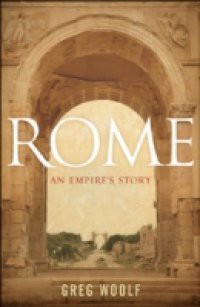The idea of empire was created in ancient Rome and even today the Roman empire offers a powerful image for thinking about imperialism. Traces of its monuments and literature can be found across Europe, the Near East, and North Africa - and sometimes even further afield. This is the story of how this mammoth empire was created, how it was sustained in crisis, and how it shaped the world of its rulers and subjects - a story spanning a millennium and a half. Chapters that tell the story of the unfolding of Rome's empire alternate with discussions based on the most recent evidence into the conditions that made the Roman imperial achievement possible and also so durable, covering topics as diverse as ecology, slavery, and the cult paid to gods and men. Rome was not the only ancient empire. Comparison with other imperial projects helps us see what it was that was so distinctive about ancient Rome. Ancient Rome has also often been an explicit model for other imperialisms. Rome, An Empire's Story shows quite how different Roman imperialism was from modern imitations. The story that emerges outlines the advantages of Rome had over its neighbours at different periods - some planned, some quite accidental - and the stages by which Rome'srulers successively had to change the way they ruled to cope with the problems of growth. As Greg Woolf demonstrates, nobody ever planned to create a state that would last more than a millennium and a half, yet the short term politics of alliances between successively wider groups created a structure of extraordinary stability. Rome's Empire was able, in the end, to survive barbarian migrations, economic collapse and even the conflicts between a series of world religions that had grown up within it, in the process generating an imagery and a myth of empire that is apparentlyindestructible.

